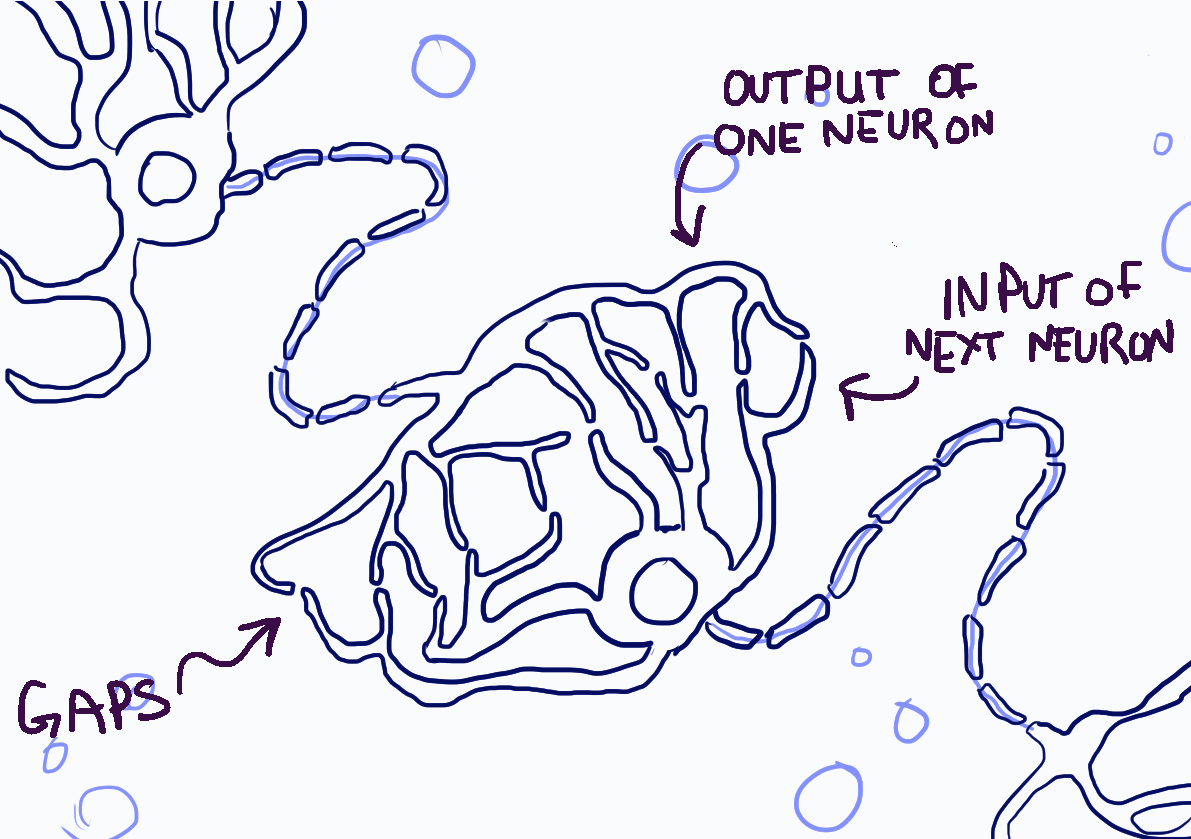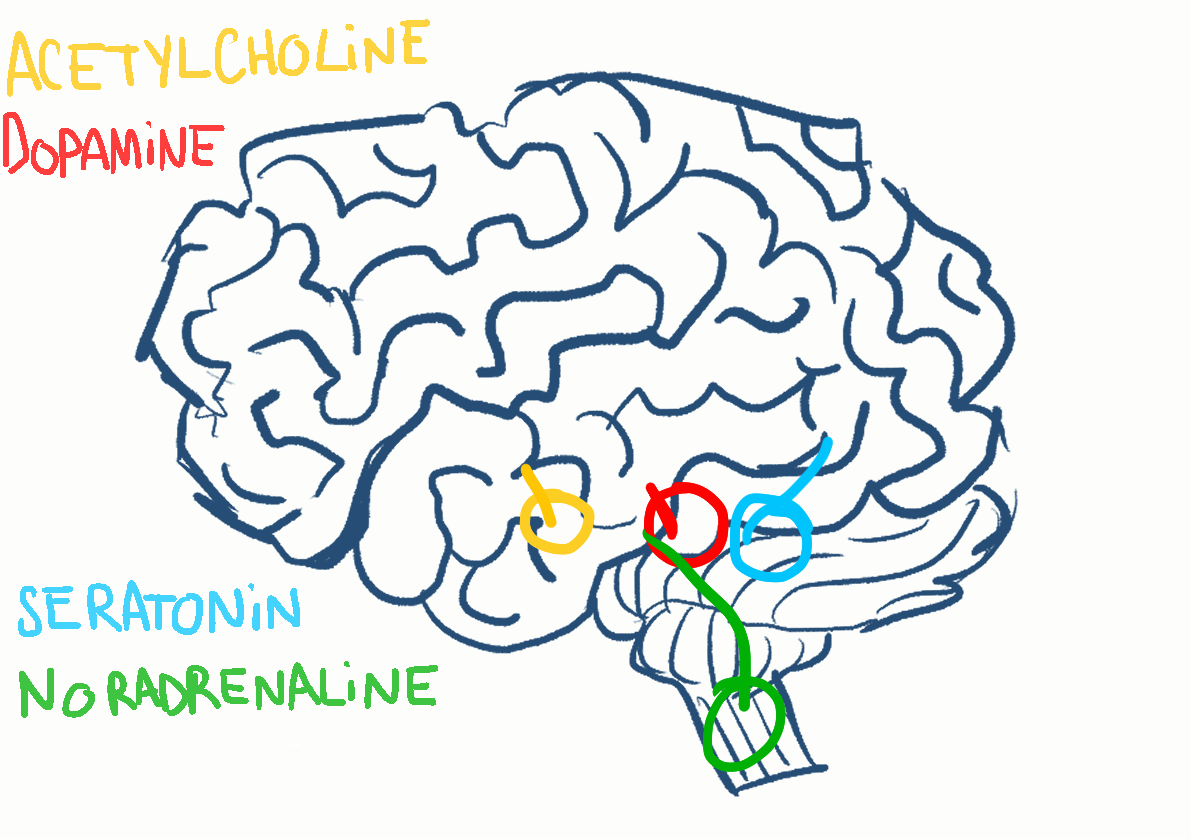Why aren't neurons properly connected?
Here’s a strange thing. Neurons aren’t properly connected.
They signal to one another – the electrical output of one neuron influences the activity of the neurons to which it is supposed to be connected. But there are tiny gaps between the output of one neuron (the end of its ‘axon’) and the input of the next neuron (its ‘dendrites’). For the electrical signal to re-ignite on the other side of the gap, chemicals have to be released into the liquid in which the neurons sit, and suffuse across the gap till they reach the neuron at the other side. It takes a few milliseconds. This happens in many tiny structures where the neurons (almost) touch, called synapses.
Why would you do that? Why aren’t the neurons properly connected, so the electrical output of one neuron is fed straight into the next one? Surely that’s much faster, less prone to break down?
Well, that does happen sometimes. Big motor neurons have direct electrical connections, where they need to fire fast and fire strong, ask no questions, get the body moving. Especially in defensive reflexes. Which makes it all the more puzzling why the rest of the neurons aren’t properly connected.
Neurons are wired into networks where much of what each neuron does only depends on the neurons around it. The neuron receives electrical stimulation and sends electrical stimulation to other neurons. What the neuron does is local. It goes about its business oblivious to important issues that may be facing the whole brain.
But let’s say you wanted to control the activity of a whole network of neurons at once, or a whole brain region. There are two ways you could go about this. You could have a bunch of ‘control’ neurons, which had connections to every single neuron in the region you want to control. Indeed, the brain uses this solution sometimes. That’s how the modulatory system in the frontal cortex turns on or turns off relevant parts of the specialised systems in the rest of the brain. But there’s another way.
First, you sit the electrically signalling network of neurons in a bath of fluid. Next you very slightly separate the neurons, so there are tiny gaps between them. You then make the final bit of communication between the neurons cross the gaps, using chemical communication through the fluid. It’s not as fast. It’s not as efficient. But now if you alter the chemicals in the bath of fluid, you can change how communication works in the whole network at once. Instead of your ‘control’ neurons having to directly connect with every neuron in the brain region they want to control, they can simply pump different chemicals into the fluid bath in which that region sits. Those chemicals are called neurotransmitters. And they allow modulation of whole regions of the brain.

There are a number of different neurotransmitters, each issued by their own ‘control’ neurons. These control systems are wired to different regions, and they serve different roles in modulation. Here are four of the main neurotransmitter systems.
Serotonin is used in the control system that modulates level of arousal or mood, including sleep or wakefulness. When it’s released, the message to the region is ‘Stay awake! Be happy!’. Drugs that alter levels of serotonin have been found to help some mental health conditions that affect mood, such as depression.
Noradrenaline modulates attention, vigilance, and anxiety. It says to a brain region, ‘Look lively, this is important!’
Acetylcholine encourages learning and memory, and is particularly used to enhance learning in the hippocampus. It says to the network, ‘Remember this!’
Dopamine is more limited in the regions in which it is produced, focusing on regions that decide what to do or when to move. It is involved in motivation, and particularly signalling when current behaviour is or isn’t getting the expected reward. It says to a region, ‘Do this again to get what you want’ and then ‘Did we get what we wanted?’ 1
Neurotransmitters, then, are another way in which the brain is different from a computer. If you put a computer in a bath of chemicals, it generally doesn’t work better.

[1] Persistent release of dopamine has been implicated in addiction, particularly in the development of an obsessive craving for drugs at the expense of family, friends, and job (see e.g. this paper). Insufficient dopamine and neurons with insufficient sensitivity to dopamine have been linked with attention deficit hyperactivity disorder (see e.g. this paper). Both addiction and ADHD are disorders where there is a deficiency in the reward system.